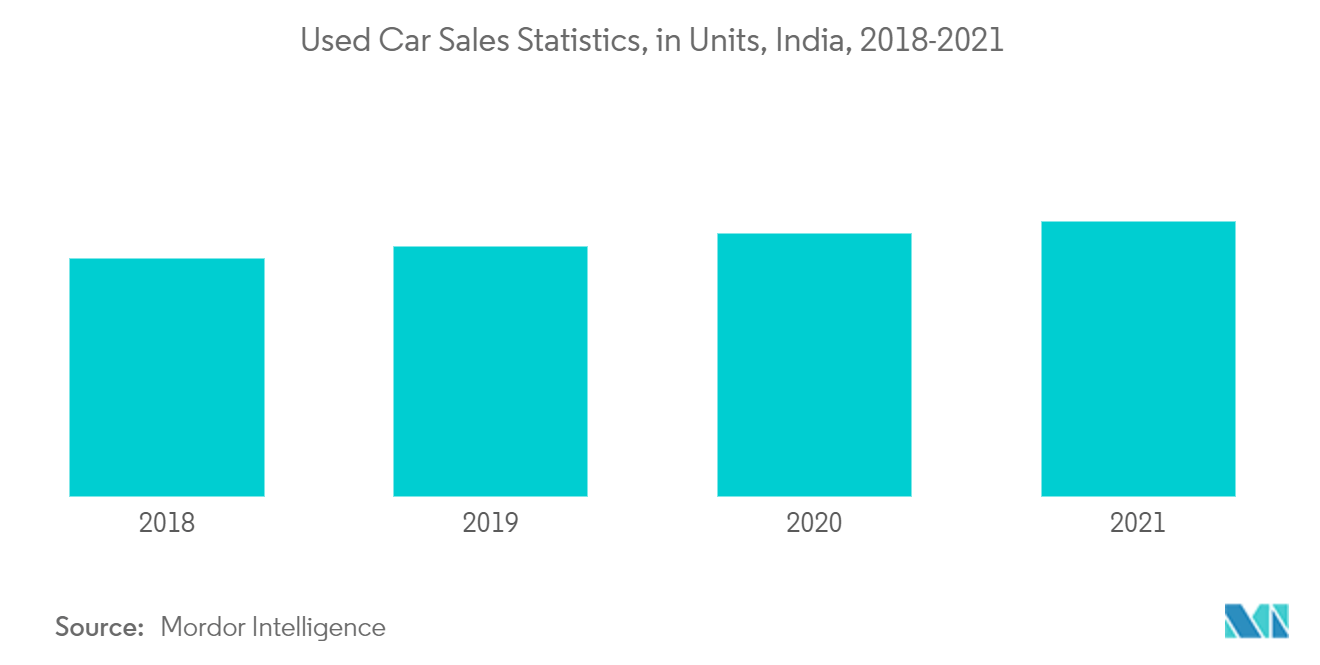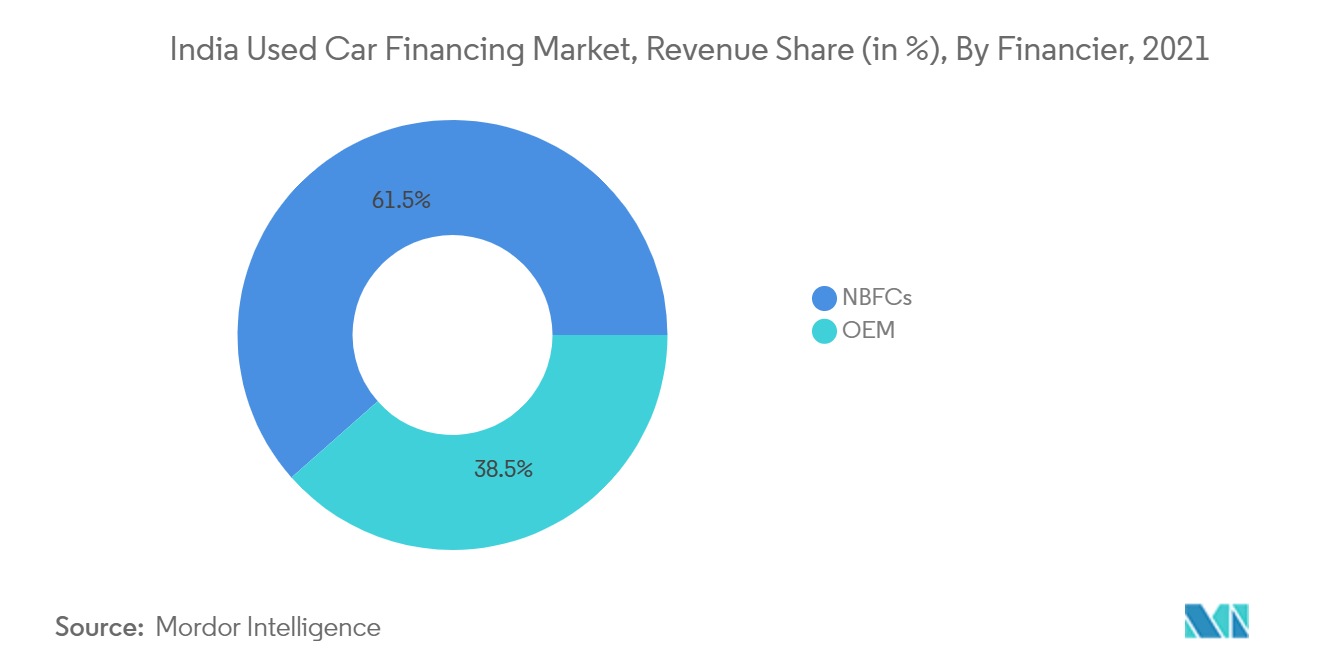Market Trends of India Used Car Financing Industry
This section covers the major market trends shaping the India Used Car Financing Market according to our research experts:
Burgeoning Used Car Industry Subsequently Driving the Financing Market
The used car business in India has been picking up pace over the past few years. In 2016, roughly 3.3 million used cars were sold, and in FY2019, the number breached the 4 million mark, with pre-owned cars registering more sales than new cars. In FY2021, around 4.4 million used cars were sold in India, which is likely to create an opportunity for the used car financing market.
Growing digitization and startup with new business models is promoting the used car financing market. Digitization helps to store, retain and retrieve data. Almost all information is in digital format. This reduces the capital resources required and reduces the problem of storing documents. An increase in digitization in auto finance will extend end to end, including e-signatures and digital loan documents have an opportunity to gain an advantage over the market. For instance,
- In February 2022, Kuwy launched end to end digital lending platform for online car sellers. The platform allows car manufacturers, dealers, aggregator platforms, and lenders to offer digital retailing to their customers.
The rise in shared mobility services across the country is likely to be a key factor for the used car financing market. Also, the revision of the GST rate on used cars from 28% to 12 - 18% is also acting as a driver of the market. With companies gradually focusing on reducing the production of diesel cars, for instance, Maruti Suzuki's decision to exit the diesel car segment by April 2020 is also expected to increase the demand for compact diesel cars (mainly due to their higher mileage figures) in the used car market, unless there is a backlash against diesel cars.
The major presence of OEMs, including Maruti Suzuki, Tata Motors, and others, are attracting consumers for used cars and offering better financing options owing to which the demand for used cars is increasing. Even luxury car makers, including Audi, also entered the used car market, which increased the sale of used premium cars. The demand for luxury cars is also witnessing a continual increase, with nearly 50,000 units sold in 2018 compared to around 40,800 in the previous year. Until a few years ago, owning a luxury car used to be a dream for numerous consumers, owing to financial hurdles, but this is gradually changing, as the consumers can easily buy pre-owned luxury vehicles, as the market is becoming more organized with easy access to financing options, annual maintenance contracts, and lower entry prices.

NBFC’s inclined towards funding used cars to recover from market slump
Non-Banking Financial Companies (NBFCs) are witnessing an increase in demand for financing for used vehicles post-Covid. Leading NBFCs such as Mahindra Finance, Shriram Finance, and Magma Fincorp have been forced to struggle with the rising cost of funds amid a liquidity squeeze that was sparked by the default by Infrastructure Leasing & Financial Services (IL&FS). Even financiers have tightened screening of borrowers and are now going slow on the relatively higher risk segments. In lieu of this situation, several lenders have turned to fund used cars to protect their margins. For instance,
- Cholamandalam Investments & Finance Company (Chola) witnessed a share of used vehicle finance in FY21 and FY22 was 27%, an increase of 1% over FY20. In Q4 last fiscal (FY22) alone, the number of used vehicles that were financed rose to around 57,000, a jump by 17,000 vehicles, when compared with the corresponding fourth quarter of FY21.
Anticipatory volume recovery led by BS-VI pre-buying and easing of the liquidity situation is expected to provide further opportunity to the used car financing sector. Cars24, a leading online platform that facilitates buying and selling of cars, is now venturing into the financing business. The company acquired NBFC license from the Reserve Bank of India in July 2019 and is aiming for disbursement of nearly US$ 25 million in its maiden year.


